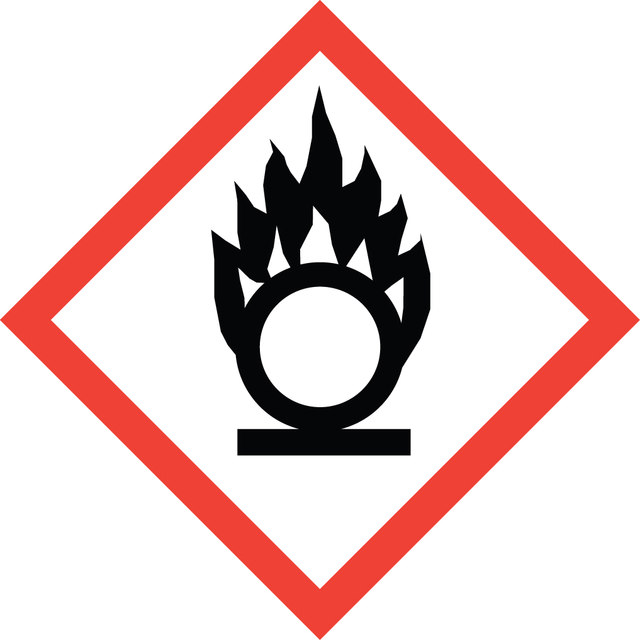All Photos(1)
About This Item
Empirical Formula (Hill Notation):
HNO3
CAS Number:
Molecular Weight:
63.01
MDL number:
UNSPSC Code:
12352106
PubChem Substance ID:
Recommended Products
grade
reagent grade
vapor pressure
8 mmHg ( 20 °C)
Assay
>90%
form
liquid
color
colorless to dark yellow
bp
120.5 °C (lit.)
SMILES string
O[N+]([O-])=O
InChI
1S/HNO3/c2-1(3)4/h(H,2,3,4)
InChI key
GRYLNZFGIOXLOG-UHFFFAOYSA-N
Looking for similar products? Visit Product Comparison Guide
Other Notes
A -D suffix exists for administrative purposes only.
All -D packages are 100% the same product, same quality, same specification as the package sizes previously sold without a -D.
All -D packages are 100% the same product, same quality, same specification as the package sizes previously sold without a -D.
Signal Word
Danger
Hazard Statements
Precautionary Statements
Hazard Classifications
Acute Tox. 3 Inhalation - Eye Dam. 1 - Met. Corr. 1 - Ox. Liq. 2 - Skin Corr. 1A - STOT SE 3
Target Organs
Respiratory system
Supplementary Hazards
Storage Class Code
5.1A - Strongly oxidizing hazardous materials
WGK
WGK 2
Flash Point(F)
Not applicable
Flash Point(C)
Not applicable
Personal Protective Equipment
dust mask type N95 (US), Eyeshields, Gloves
Regulatory Information
新产品
Choose from one of the most recent versions:
Already Own This Product?
Find documentation for the products that you have recently purchased in the Document Library.
Alyson M Baergen et al.
Environmental science & technology, 47(2), 815-820 (2012-12-15)
The fate of NO(x) (=NO + NO(2)) is important to understand because NO(x) is a significant player in air quality determination through its role in O(3) formation. Here we show that renoxification of the urban atmosphere may occur through the
Stijn Smulders et al.
Toxicological sciences : an official journal of the Society of Toxicology, 141(1), 132-140 (2014-06-14)
The unique physical and chemical properties of nanomaterials have led to their increased use in many industrial applications, including as a paint additive. For example, titanium dioxide (TiO2) engineered nanoparticles (ENPs) have well-established anti-UV, self-cleaning, and air purification effects. Silver
Paul A Adlard et al.
Neurobiology of disease, 81, 196-202 (2015-01-01)
Zinc transporter-3 (ZnT3) protein is responsible for loading zinc into presynaptic vesicles and consequently controls the availability of zinc at the glutamatergic synapse. ZnT3 has been shown to decline with age and in Alzheimer's disease (AD) and is crucially involved
Samantha J Snow et al.
Journal of toxicology and environmental health. Part A, 77(19), 1164-1182 (2014-08-15)
Particulate matter (PM)-associated metals can contribute to adverse cardiopulmonary effects following exposure to air pollution. The aim of this study was to investigate how variation in the composition and size of ambient PM collected from two distinct regions in Mexico
Guimiao Lin et al.
Nanomedicine : nanotechnology, biology, and medicine, 11(2), 341-350 (2014-12-03)
Along with widespread usage of QDs in electronic and biomedical industries, the likelihood of QDs exposure to the environment and humans is deemed to occur when the QD products are degraded or handled as waste for processing. To date, there
Our team of scientists has experience in all areas of research including Life Science, Material Science, Chemical Synthesis, Chromatography, Analytical and many others.
Contact Technical Service



